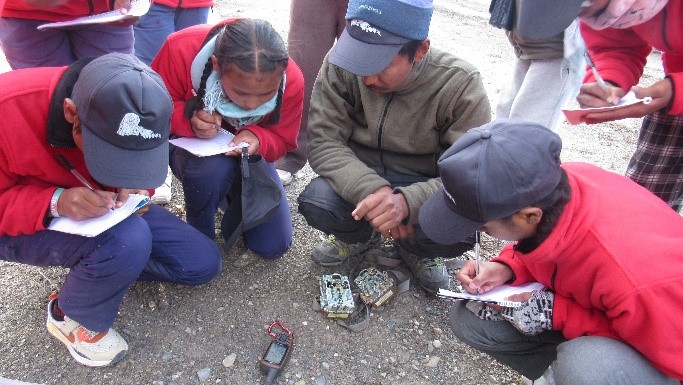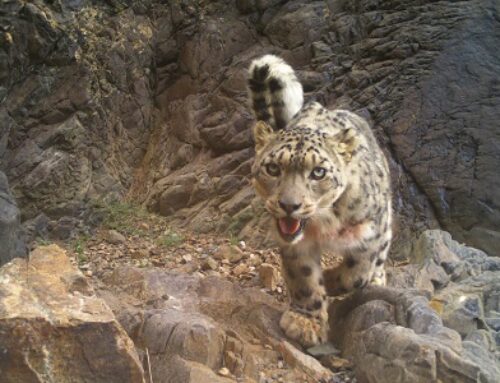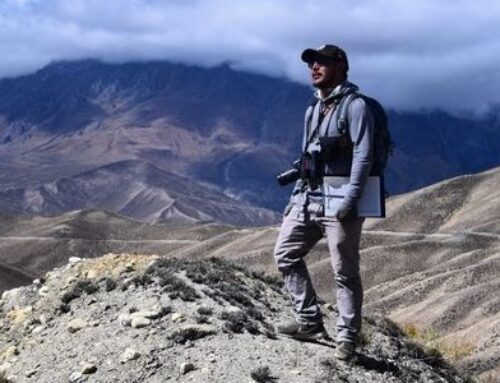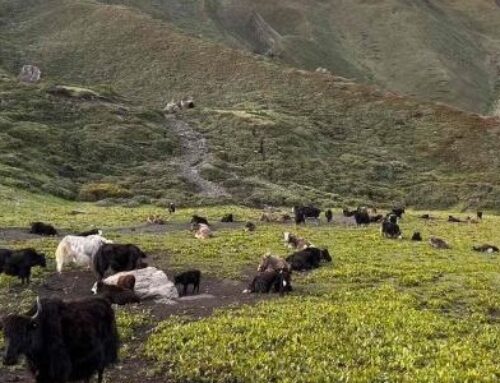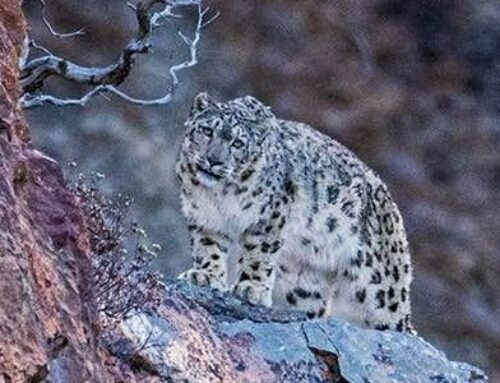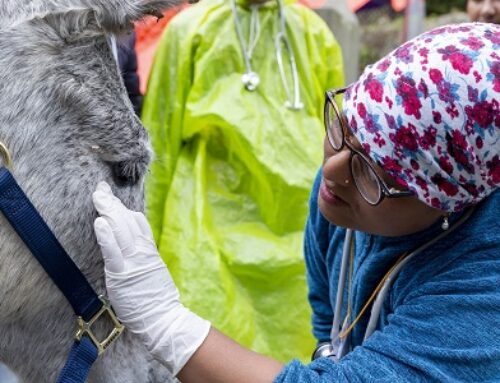Aspiring future conservationists are mentored by citizen scientists during an environmental wildlife monitoring camp.
In this article, learn how citizen scientists, skilled at monitoring resident snow leopard populations, work with local communities to mitigate possible conflict between people and predators and act as teachers and guides for young students, inspiring them to protect the environment and the wild species that inhabit it.
By Anil Adhikari with Kayley Bateman
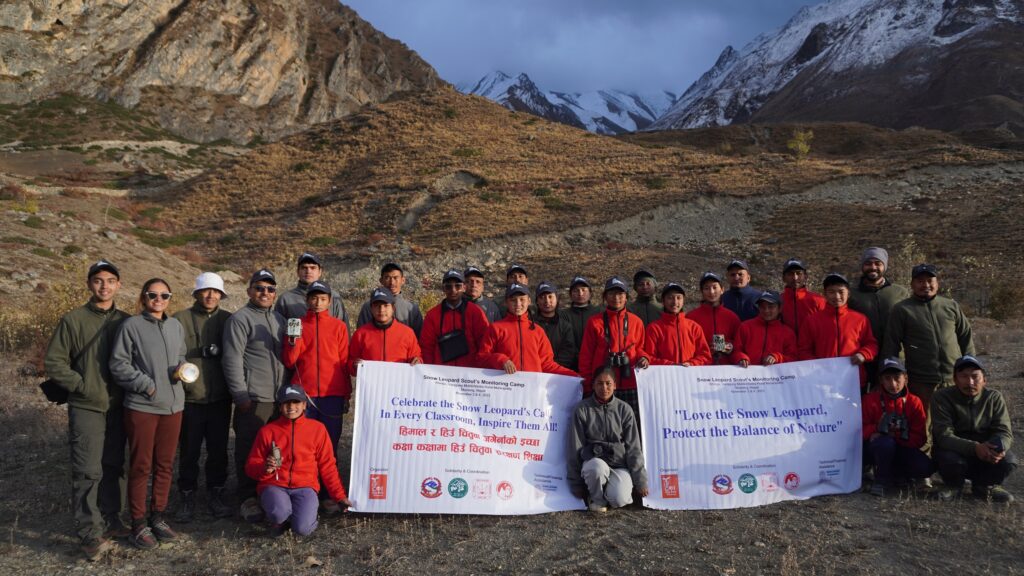
On the bright autumnal morning of November 4th, Tenzin Norbu Gurung, an educator from Nepal’s remote Mustang region, found himself perched atop a vast peak within the Annapurna Conservation Area. With binoculars in hand, he gazed up intently at the imposing cliffside. Surrounding him were students, fellow teachers, and park rangers, all captivated by the stunning landscape before them. Tenzin had joined Teka Samuha Nepal’s Snow Leopard Scouts Monitoring Camp, a two-day expedition to snow leopard habitat to immerse local students in field-based snow leopard conservation education.
As he scanned the cliffside, Tenzin marveled at the massive rocks, lush bushes, shrubs, and stretches of grassland. Scattered across the rugged terrain, he could see groups of trekkers making their descent, having successfully crossed the challenging Thorang-La pass. Tenzin couldn’t help but contemplate the possibility of catching a glimpse of the rare and elusive snow leopard or the agile blue sheep navigating the challenging terrain of the cliff. The atmosphere was filled with anticipation and excitement as everyone awaited the potential sighting of these creatures.
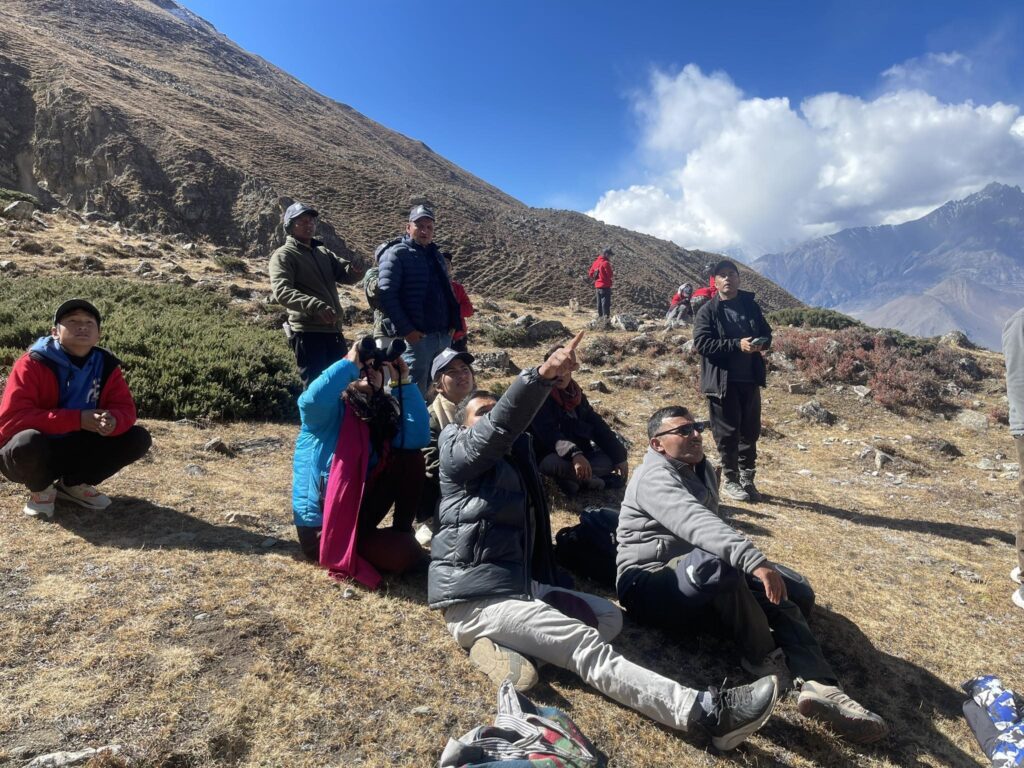
Participants observing blue sheep
In a sudden burst of excitement, Tenzin’s face lit up, and he exclaimed, “Wow! Look over there, herds!” His gaze fixed on the cliff, he animatedly pointed towards a gathering and announced, “blue sheep.” With infectious enthusiasm, he dashed toward Sarbesh, an amateur photographer who had been diligently setting up his tripod and camera for the past hour. In a collaborative effort, Tenzin and Sarbesh aimed their camera lenses at two small herds of blue sheep, capturing precious video footage of these evasive creatures against the stunning backdrop of the Mustang landscape.
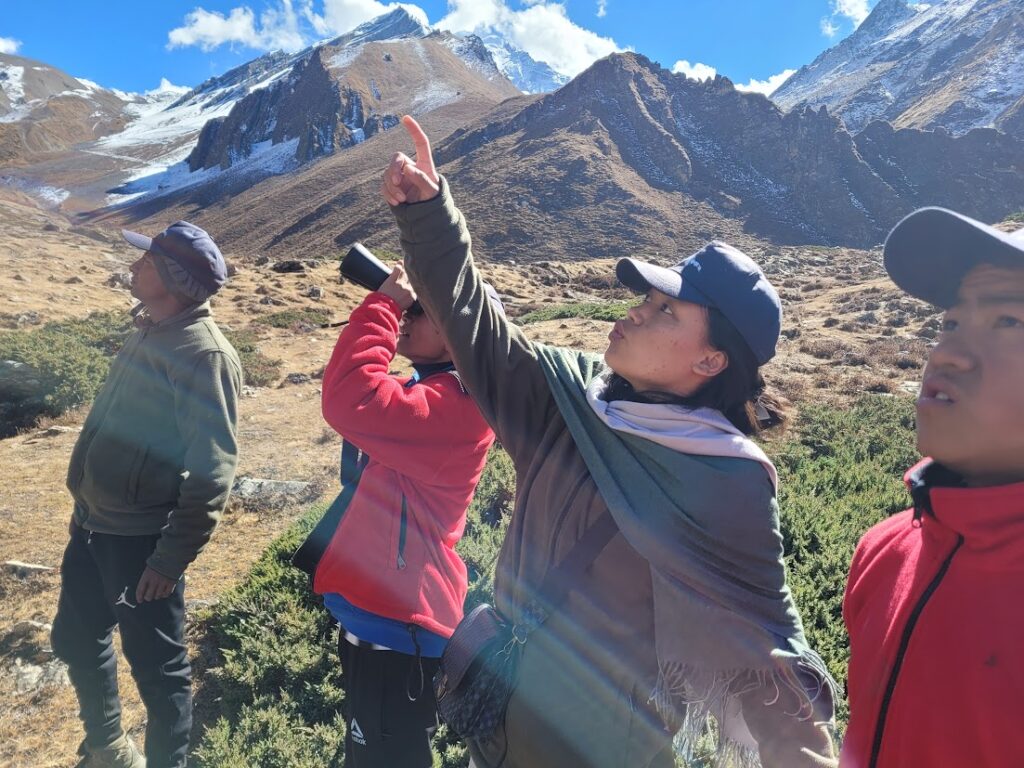
As each student took turns observing the wildlife, Ramesh BK, a citizen scientist, emphasized the importance of this sighting. He explained that blue sheep are the primary prey of snow leopards, and evaluating prey populations is an important part of snow leopard monitoring and conservation. The observations that took place that morning put the Snow Leopard Scouts in the role of citizen scientists and highlighted the importance of wildlife monitoring and the hands-on skills they had been learning.
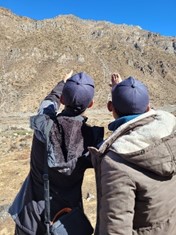
Over the two days, students engaged in various activities, learning from field experts. They hiked to the Chhonkar grasslands at 13,000 feet, participating in story writing and art sessions led by experienced facilitators. The group interacted with local residents, including Kalabati Magar, a livestock farmer sharing her encounters with snow leopards. She shared how snow leopards had preyed upon her livestock, which impacted her livelihood. Her experience underscored the importance of coexistence in the shared mountain landscapes.
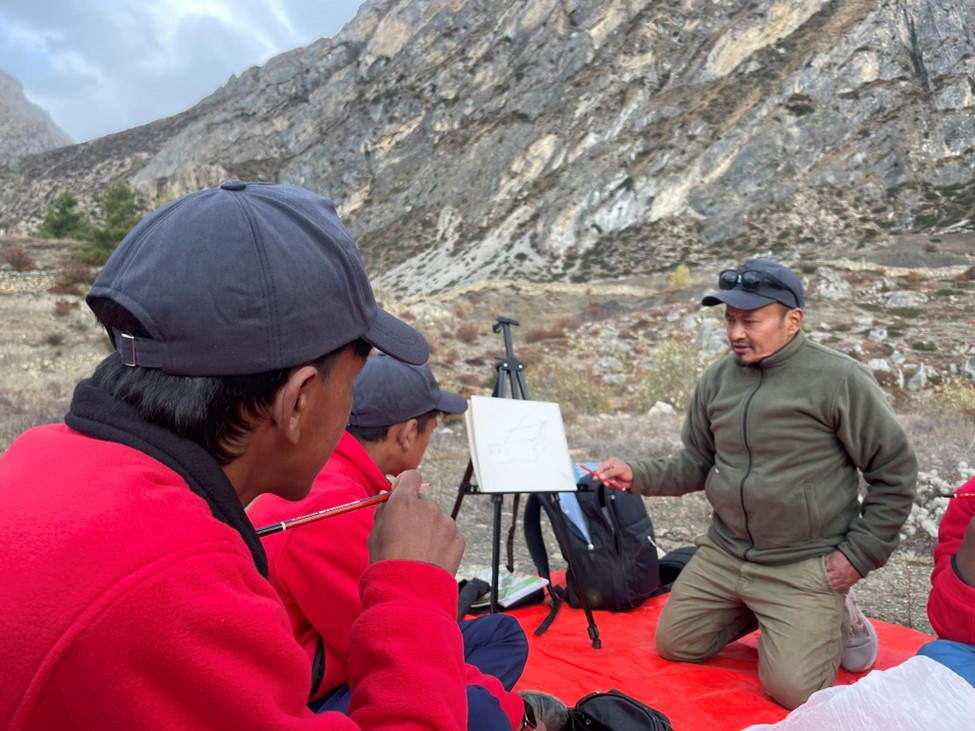
Students taking part in an art lesson
In addition to hearing firsthand testimonials, the students had the opportunity to get hands-on experience with camera trapping and GPS, both valuable skills required for monitoring snow leopards. Kristina Thakali, an eighth-grade student shared how they had learned about these monitoring techniques in their classroom instruction. Now, at the Snow Leopard Scout’s Monitoring Camp, they had the invaluable opportunity to put these skills into practice, bridging the theoretical knowledge gained in the classroom with practical application.
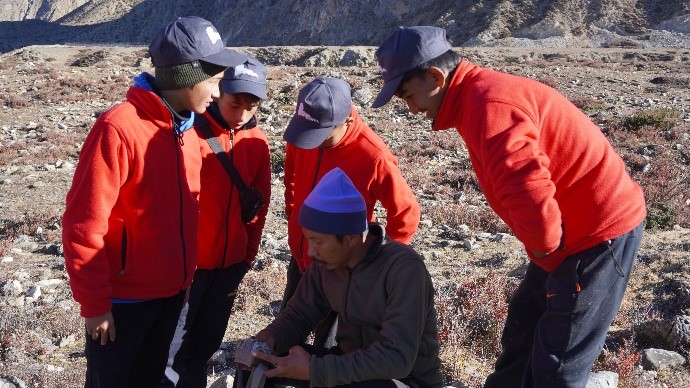
Students learning how to use a trail camera
